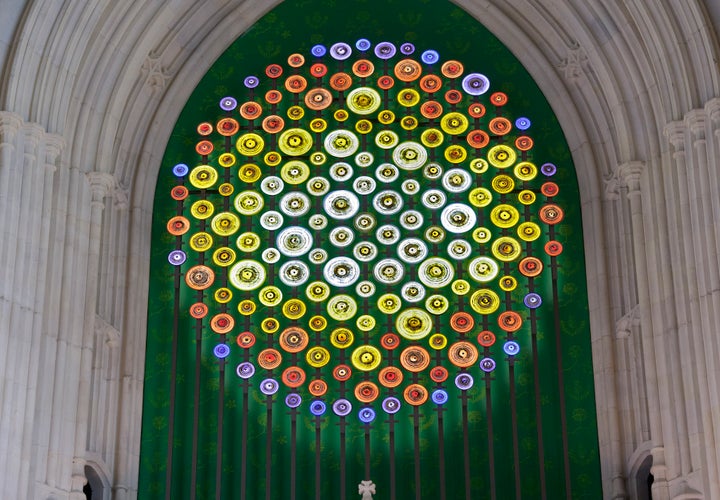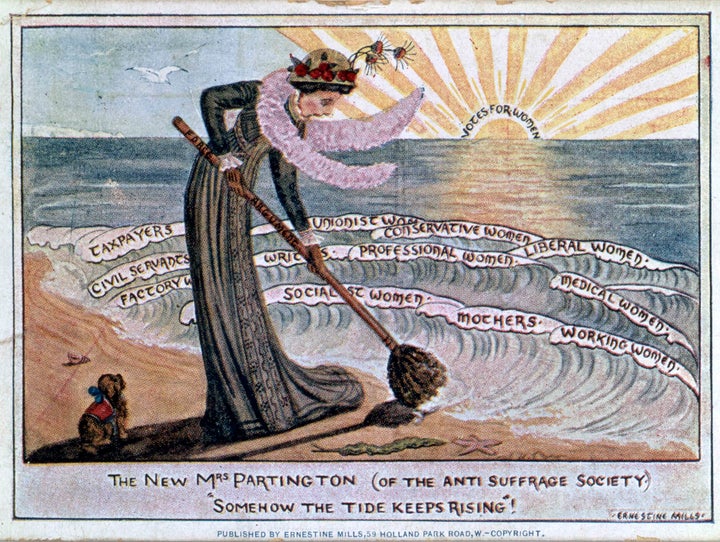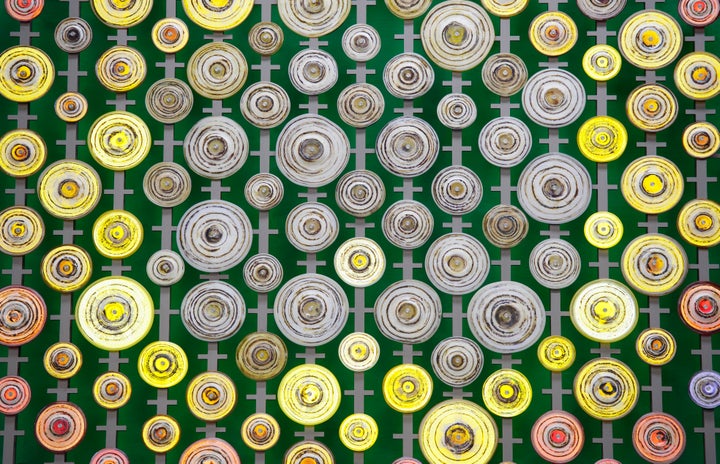
Parliament has unveiled an ambitious art installation celebrating women’s struggle for the vote that also hopes to inspire those carrying the flame for equality today, its creator has told The Huffington Post UK.
A six-metre high light sculpture today officially goes up above an entrance to Westminster Hall, the oldest building in Parliament and one of its busiest thoroughfares.
The artwork, called New Dawn, is a tribute to the thousands of campaigners who paved the way for universal suffrage, and has been unveiled 150 years to the day since the philosopher and MP John Stuart Mill presented the first mass petition calling for women’s votes in the House of Commons.
Made up of 168 hand-blown glass scrolls, New Dawn is the brainchild of Mary Branson, who for more than two years has been Parliament's 'artist-in-residence' for women’s suffrage.
She told HuffPost UK that the large scale of the sculpture was a deliberate nod to the efforts of campaigners, who lost their husbands, children and jobs, and faced prison, in their battle for equality.
An intricate piece, the rainbow of colours change over a twelve-and-a-half-hour cycle, and linked to the tide of the Thames. The ebb and flow of the illumination in turn reflects the rising tide of change.

“I hope people will enjoy the artwork visually for what it is, then ask more questions about the movement," she said.
"When I came here I had a very small knowledge of women’s history. At school in the 1970s, we had no women’s history. My knowledge was about the Suffragettes and I didn’t know about the wider movement.
"This artwork is about celebrating everyone who was involved in gaining the vote. It wasn't one organisation or one person."
The colours have significance, too. They represent the many organisations who spoke up, including the National Union of Women’s Suffrage Societies, the Women’s Social and Political Union, the Women’s Freedom League and the Men’s League for Women’s Suffrage.
The work as informed by Branson's interviews with by searching through archives and conversations with historians and MPs.
Along the way she came across a postcard from around 1910 depicting the "Mrs Partington" character, a figure used to belittle women, but portrayed as being unable to hold back the advances of women. It features the sunshine motif included in Branson's piece.

She added: "Emmeline Pankhurst, Emily Davison - they’re so well documented.
"But what was really moving was reading about all the women who were just ordinary women - all ages, from across the country just relentlessly petitioning.
"Many of them not realising the vote in their lifetime. It's celebrating the bravery of all women in that movement."
She added: “They weren’t particularly remarkable, but if they left work and came here to petition a hundred years ago that was a really big deal. Not like petitioning today. You can click a button or go on a march.
"But then you would be putting your job in jeopardy. People forgot that what we think of as basic protest was a really big deal then.”
At the entrance to St Stephen’s Hall, the old entrance Parliament, the work will be seen by the thousands of visitors to Parliament each year. The glass scrolls are a reference to the legislation that gave women the vote, and are mounted on a portcullis structure – the principal emblem of Parliament.
But the the installation is not meant to be seen in a social vacuum and Branson says it is as much a tribute to today's equivalent.
“Social media is very exciting to see, and great organisations like No More Page Three, Everyday Sexism and Sisters Uncut doing incredible jobs and doing them in different ways. The piece is celebrating everyone, and be able to do it in any way they think they can. Not everyone want to do direct action, but would be happy to click a button and petition.”

